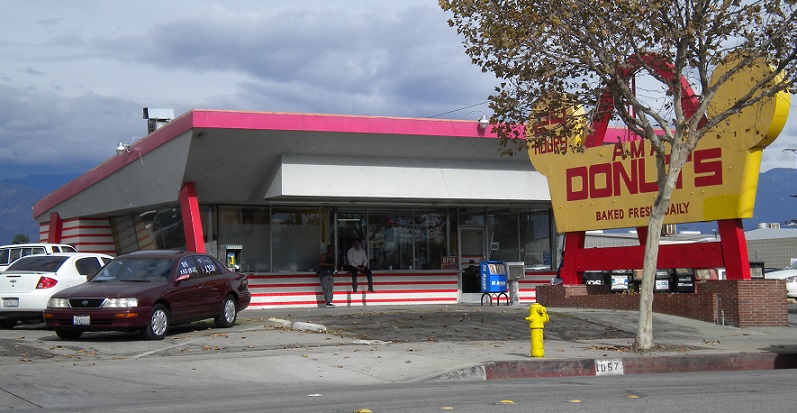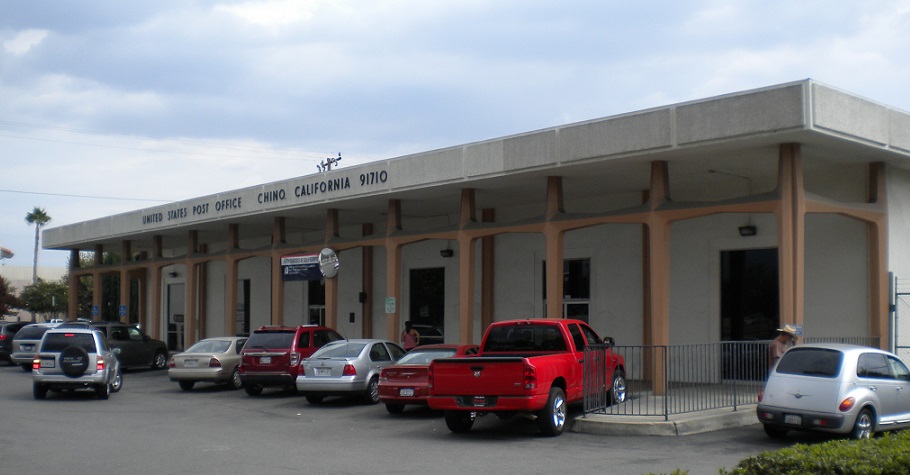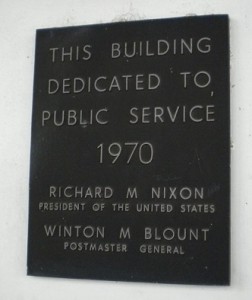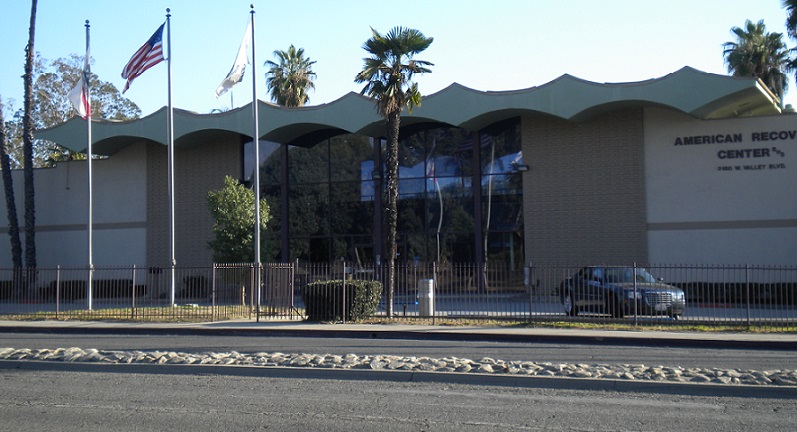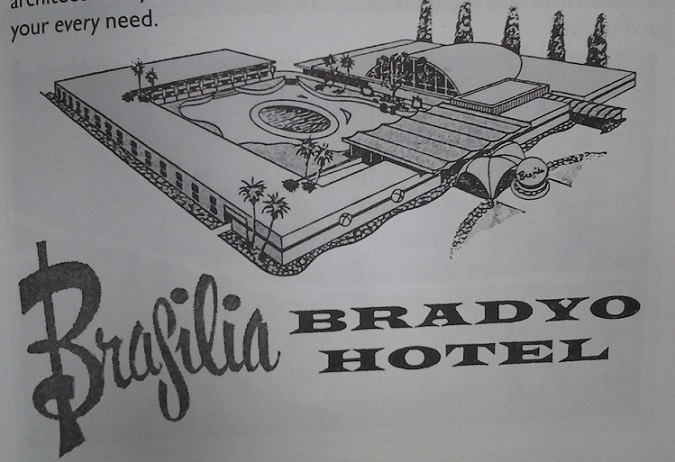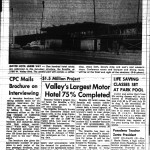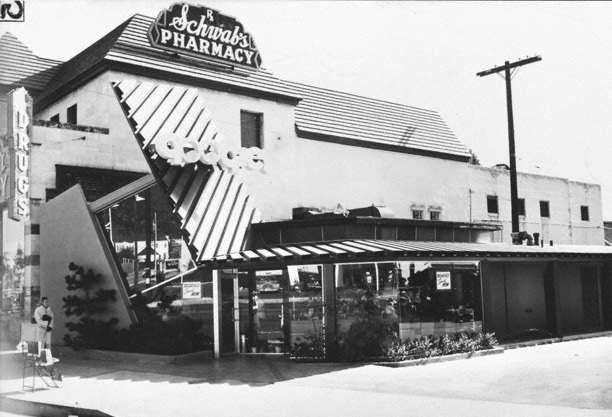Red and white tile, slanted roof, arched sign…looks kind of familiar. Opened in September 1954, this stand at 1057 E. Mission Blvd. in Pomona was one of the earliest McDonald’s, back when they were still franchised by brothers Richard and Maurice McDonald of San Bernardino.
The architect of the early franchises was Stanley Meston of Fontana. Pomona’s operated as a McDonald’s until 1968, when the tops of the arches were removed. In recent years it’s been AMA Donuts. As Alan Hess characterizes the building in his book “Googie Redux”: “remodeled but still a recognizable example of the classic design.”
The first McDonald’s opened in 1948 in San Bernardino, after their 1940 carhop stand was converted into a drive-up. After that, McDonald’s No. 1, subsequent restaurants were opened in this order in 1953 and 1954, according to Hess’ book: 2) Phoenix, Ariz., 3) Downey, 4) North Hollywood, 5) Alhambra, 6) Sacramento, 7) Azusa and 8) Pomona.
Some sources reverse Azusa and Pomona; both opened in September 1954. My information from a decade ago, which I believe came from pop culture scholar Chris Nichols, is that Pomona’s opened Sept. 1. Unless Azusa’s opened the same day, it’s likely Pomona’s is No. 7, not 8. Whichever, it’s still old, and unlike Azusa’s, it’s still standing.
Downey’s is the oldest surviving example and operates as a McDonald’s. Pomona’s is the second-oldest. Third-oldest is at 1900 S. Central Ave. in L.A. and can be seen from the Blue Line just south of downtown; it’s a Mexican restaurant and looks less like a McDonald’s now after alterations a year or two ago.
Thus, Pomona’s building may be the best-preserved original McDonald’s other than Downey’s. Perhaps someday, Pomona’s will get the Downey treatment.

